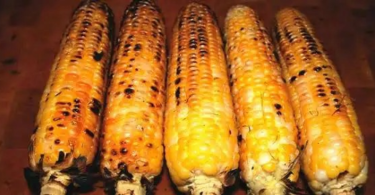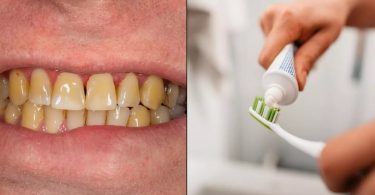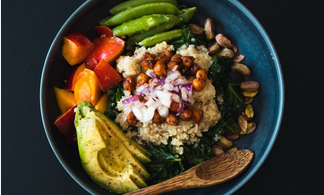How to Lose Weight and Lower Blood Sugar
Diabetes is a health problem in modern society, and obesity is a warning sign of diabetes. Neng Chun Yu, a well-known Taiwanese medical practitioner of more than 30 years and author of the best-selling book “Dr. Neng Chun Yu’s 133 Low-Carbohydrate Meal Plate,” shared his journey of finding and successfully practicing a natural and healthy way to control carbohydrate intake.
Neng Chun Yu, an endocrinologist who specializes in treating diabetes, was once troubled by obesity and diabetes.
He is 163 cm tall and weighed 78 kg in 2016, with a particularly obvious beer belly. That was his wake-up call. Neng Chun Yu got a blessing in disguise and embarked on the path to successful carbohydrate intake control.
Moreover, he has a relatively high fasting blood sugar level in the morning, which is classified as prediabetes, and a strong family history of diabetes.
As a physician, Neng Chun Yu knew that diet control is an important part of lowering blood sugar. As a “prediabetes patient,” he started to study in detail: what to eat and how much to eat to effectively lower blood sugar.
Neng Chun Yu personally experimented with various foods, from rice and pasta to milk and fruits, and he tested the changes in his blood sugar level after a type of food was eaten. Gradually, he created a diet that only has “one serving of carbohydrate” per meal, that is, the “133 low-carbohydrate meal plate” diet.
Following this method, Neng Chun Yu lost 20 kg in two years from 2016 to 2018. From then to this year, he lost a total of 24 kg. From the recent pull-up photo, his abs are clearly visible, and there is no flab on his body. His blood sugar is also at a healthy level.
Below, Neng Chun Yu gave a detailed explanation of the “133 low-carbohydrate meal plate” diet.
Lowering Blood Sugar Is Key to Reducing Fat
As a metabolic physician who specializes in treating diabetes, Neng Chun Yu conducts a lot of blood sugar tests on patients in my clinic, as well as tests the effect of food on blood sugar levels.
On top of that, his clinic does a lot of muscle and fat measurements. Neng Chun Yu’s clinic conducted more than 30,000 measurements on more than 5,000 people and found that those with normal muscle mass and low-fat ratio accounted for only about one-fifth; while the problems of obesity and low muscle mass were common among the tested subjects.
When it comes to fat loss and muscle gain, most people pay more attention to the latter, claims Neng Chun Yu. However, multiple tests have shown that both fat loss and muscle gain can lower blood sugar, and fat loss is more effective. Data from his clinic shows that losing fat is about three times as effective in lowering blood sugar as building muscles.
It actually makes sense, since insulin regulates the energy supply in different tissue cells in the body, including fat cells, he says. It allows fat cells to “occupy” insulin, thereby affecting insulin’s regulation of the blood sugar level.
Therefore, fat loss is essential to the overall balance of metabolism. Neng Chun Yu says that one of the things he is working on is figuring out how to maintain muscle growth while reducing body fat by adjusting his daily diet.
The 133 Low-Carbohydrate Meal Plate Diet
The “one” in the “133” diet refers to one serving of “sugar” (or “carbohydrate”), including starchy foods with a high glycemic index, such as rice and all wheaten food, and even fruits and dairy products. Take rice or dumplings as an example, a serving of carbohydrates means a quarter of a bowl of rice or three dumplings, he says.
What should I do if I don’t feel full after reducing starchy foods? You can increase the number of other foods accordingly, says Neng Chun Yu.
The “three” in the middle of “133” refers to the number of vegetables. Three servings of vegetables are about 300 grams before cooking and about one bowl after cooking.
In the past, it was believed that vegetables would not provide carbohydrate nutrition. This is because people used to serve vegetables with rice, and the portion of vegetables was relatively small. If the amount of vegetables is increased to 300 grams, it provides the body with the same carbohydrate nutrition as one serving of starch, which is about a quarter of a bowl of rice.
The “three” at the end of the “133” refers to the amount of protein. Three servings of protein are about the size of a human palm, and a piece of meat the size of a palm is about three-fifths of a bowl. For men, the protein may have to be increased to four servings, which is four-fifths of a bowl, says Neng Chun Yu.
All of the above foods adding up can make you feel full.
Furthermore, the more diverse the foods, the better the nutrition. The “133” diet emphasizes the proportions of different types of food; there are no strict restrictions on cooking methods.
For instance, the western chefs on Neng Chun Yu’s team are developing all kinds of “one serving of carbohydrates” baked products: salted egg yolk pastries and cookies.
Even if you use a lot of oil for one meal, just make sure the next meal is less oily, he says.
The same goes for fruits. There are various types of saccharides in fruits, but we only pay attention to the total amount of “carbohydrates”–we can eat two servings of “1/2 carbohydrates” of fruits a day; if measured with a bowl, “1/2 carbohydrates” is less than half a bowl.
“Personally, I’m used to having fruits as my “one serving of carbohydrates” for breakfast,” says Neng Chun Yu.
Naturally, it is easy to adjust food calories while adopting the “133” diet, such as using less oil when cooking, and choosing meat with low-fat content. It is easy to keep the calories of one meal under 400 calories.












